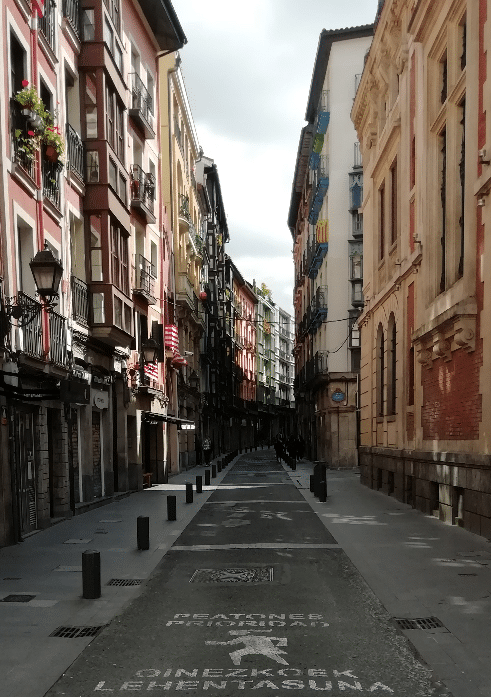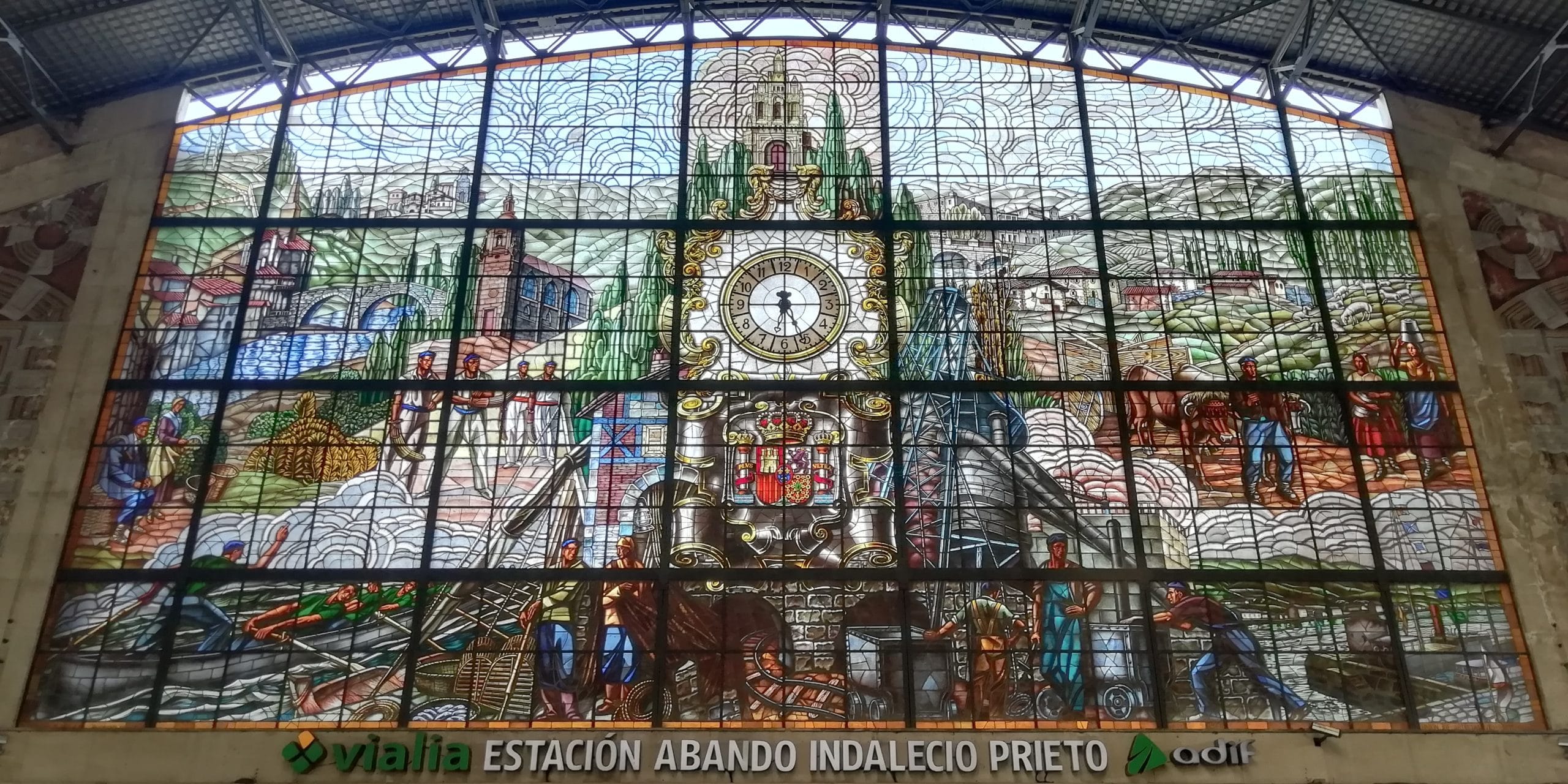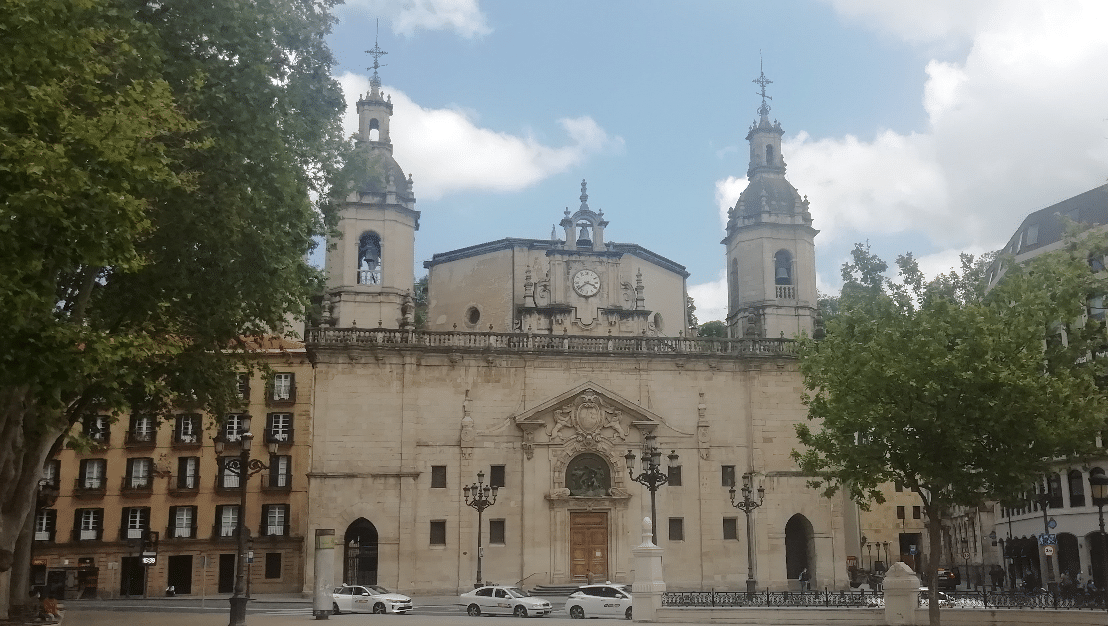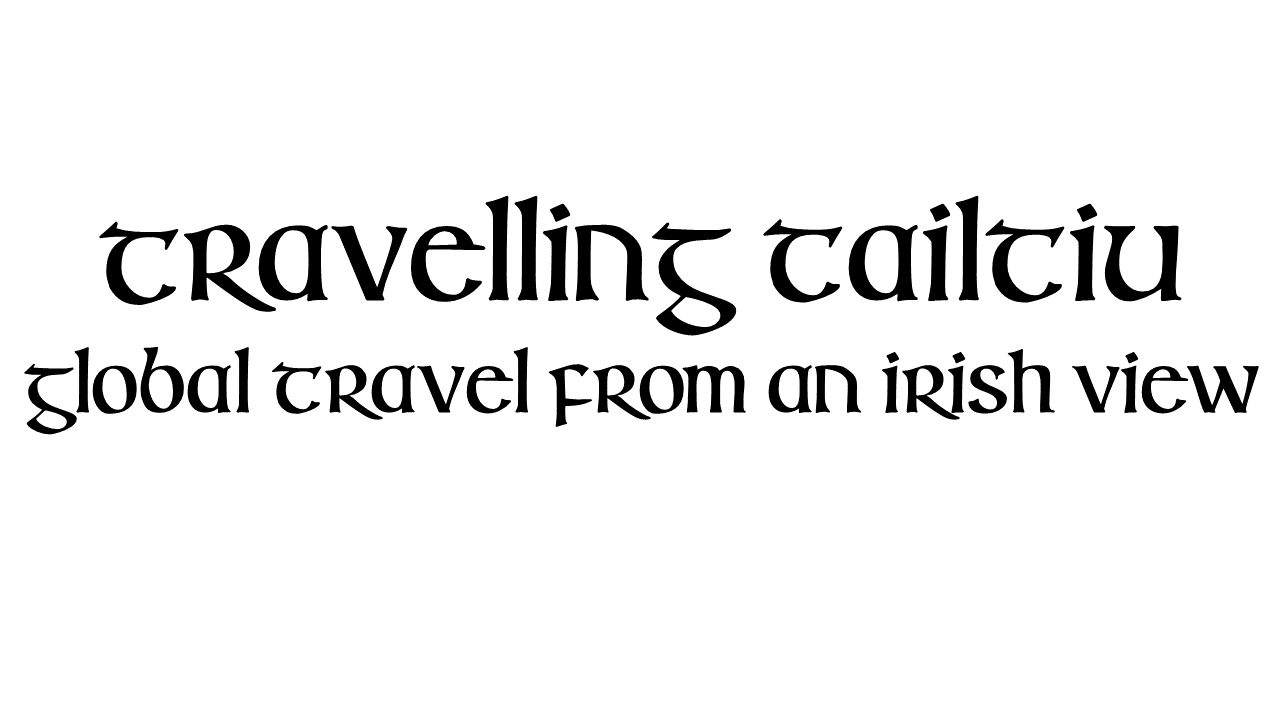Seven Streets.
Strolling around the seven streets of old Bilbao

Calle de la Esperanza, in Bilbao's old town
The seven streets of old Bilbao, the old town, are considered the core of this historic city. Technically though, Bilbao isn’t even a city. The only place in the Basque province of Biscay to ever hold that official honour is Orduña. We could describe Orduña better as a nice wee village in the mountains, but with certain historical and economic significance. Orduña is an interesting place in its own right as it is completely surrounded by the neighbouring Basque province of Álava. It actually doesn’t geographically connect in any way to the province to which it is politically a part of.
It is well worth a visit for some fresh air and a nature trek. You can also get there quite handily from Bilbao's Indalecio Prieto train station. This sits at Plaza Biribila in the central Bilbao neighbourhood of Abando, passing through scenic green countryside along the way.
Getting into the core of things
Walking out of Abando station and crossing Arenal Bridge, you will find yourself in the core of the Villa. La Villa de Bilbao. Bilbao's core is normally considered as San Francisco barrio on the left bank and the Seven Streets on the right. This reads as Zazpikaleak in the Basque language and old historical parts are commonly known as Casco Viejo in Spanish. The settlement was founded in 1300 by Don Diego López de Haro and granted the title of Villa in 1475. Villa translates roughly as a township or large settlement and had certain economic and political significance in bygone times.
The iron heart of Bilbao
An iron heart beat within the city's economy for centuries, forging trading partnerships throughout the kingdom of Spain. It also maintained economic ties with countries such as England and the Netherlands. As time went on, rapid industrialisation and territorial and municipal expansion accelerated in the early twentieth century. To cope with rapid growth, Bilbao annexed several neighbouring areas such as Abando and Deusto to facilitate expansion.
Repurposing for the modern eye
As Bilbao entered the post-industrial age at the end of the twentieth century, derelict industrial architecture littered the landscape. The city then invited designers and engineers to repurpose a lot of this derelict architecture. These post-industrial structures now form part of a beautiful and expanding riverside which stretches for miles downriver. The riverside, or la Ribera hosts a selection of sculptures, landmarks and activities for locals and tourists of all ages. Both young, old or families can find something here, and you can read more about it here.

The impressive stained-glass window in Indalecio Prieto Train Station in Abando, Bilbao
Retaining the old world
The original seven streets of old Bilbao have now expanded into a larger and mainly pedestrian area. This includes the Cathedral of Santiago, or St. James', only a cathedral since about 1949 but actually an ancient structure. This sits in the middle of a bustling network of shops, bars and restaurants. There are several smaller historical churches in the area, most notably the church of San Antón. This is famously recognisable from the crest on the team shirt of Athletic Bilbao Football Club.
Right beside San Antón church, which is right on the riverside, is the Mercado de la Ribera, the Riverside Market. This contains a lively indoor market full of fruit & veg and meat or fish stalls in a historic building. It also hosts a gallery of pintxo bars. Here you can relax and have a drink and a pintxo while looking out at the river.
Pintxo culture
The culture of pintxo bars, pronounced /PEEN-chaw/, is more popular in the Basque Country than tapa culture. Tapas is the culture of sharing a series of small plates of food between a group of friends, whereas Pintxos are more like mouthfuls. These are normally served on a small slice of bread and taken with a caña (pronounced /CAN-ya/) or a copa of wine. This forms part of a night out of visits to numerous bars, and is known as pintxo pote (/PEEN-cho PAW-tay/).
Places to go in the seven streets of old Bilbao
It is this wonderful culture of wandering about eating, drinking then moving onwards the Casco Viejo is well-equipped for. The area boasts bars both big and small on almost every one of its streets. You have fancy joints, and modest spots housing the city's counterculture, a city of rebels who don't back down. So, where to go to find pintxos in the seven streets of old Bilbao? Here are some hotspots for bars and a few more ideas for where to go both by day and by night.
Plaza Unamunno-the gateway to the seven streets of old Bilbao.
This is a spacious open plaza which sports the metro on one of its corners. It contains some top-class pintxo bars as well as a small supermarket selling traditional Basque products. Such products are normally more available when rural traders descend upon here for the mid-winter Santo Tomás Christmas market. You can get things like the local txakoli (/cha-kaw-LEE/) white wine, cheeses and meats here.
Getting around, and out of, town from here
Metro Zazpikaleak/Casco Viejo is a central transport hub that can sweep you off, and out of town. You can access it from Plaza Unamunno, and also from beside San Nikolas' Church, close to Arenal. From here, you can leapfrog to nearby spots of interest. These include the historic town of Guernica and the coastal surfers paradise of Mundaka, or the port of Bermeo. You can also get to the city of San Sebastián and even to the French Basque border town of Hendaye by Euskotren. The Casco Viejo station connects the city’s metro trains to the Euskotren railway network which spans the Basque Country. It is also surprisingly cheap, especially if you have invested the €4 to get the Barik transport card. You can use this wee magic card on buses, in and out of town, trains and the metro.
Plaza Nueva-markets and swap shops.
This plaza sits within blocks of classic flats with its walkways canopied by these dwellings. There are some very old and historic bars, among other more contemporary gastrobars. These have a great selection of food, drink and shelter from the occasional rain given the covered outdoor walkways. It is also the venue of a Sunday bric-a-brac market, selling all sorts of historical artefacts and nick-nacks.
You might also come across a Sunday swap shop for football stickers and cards on the plaza corner. Local parents take their young kids to this plaza to learn the fine art of exchange, swapping Panini cards. You might also notice a few adult traders here charging through the nose for rare stickers. This really ups the ante in a business you might expect to be exclusive for under-15s.
Barrenkale-old-school counterculture.
One thing about businesses in the Casco Viejo is that a good few of them still run on what they call an old rent. This means that the property rental was fixed by contract many years ago and still applies. The rent then comes down to the present day much lower than a modern rent. This has let a rebellious counter culture survive in the hometown of many of the first Spanish-language punk bands. It also keeps the drink and pintxos relatively cheap.
Barrenkale and the neighbouring street of Barrenkale Barrena are typical of this counterculture. The punk-rock style of the bars here might seem a bit paradoxical to the excellent quality of food they serve.
Calle Somera-t-shirts, beer and more counterculture.
So, there you are in the old town listening to the sounds of the old-school Basque punks. As these gentle tunes waft out the bar doors, you might fancy some souvenir shopping...for a punk-rock t-shirt. Calle Somera, or Goienkale in Basque, is close to Barrenkale, with more counterculture and quite a few t-shirt shops. There used to be a skinhead fashion shop here, catering to the original tradition of SHARP (anti-racist) skinheads. The beat here is the old-school skinhead taste of reggae, ska and punk, and everyone is welcome. Bilbao and its metropolitan area maintains the old-school punk and skinhead traditions to a surprising extent. Indeed, some of the more famous English-language punk bands continue to tour through the Basque Country.
Arenal.
Finally coming out of the Casco Viejo at San Nikolas church, as you cross the street and walk back towards Arenal Bridge, you will notice a leafy park. This is Arenal, and is of course also the name of the street you have crossed to get there. Here, you will periodically find various book fairs, handicraft markets and the hub of the Santo Tomás winter market. This normally coincides with the Winter Solstice, and brings the rural traders and urban dwellers together. It is especially fun as the market day contains a lot of eating and cider-drinking, as per tradition.

San Nikolas Church, on the edge of Bilbao's old town and Arenal, a spacious and green park
Arenal is also an important meeting place for the fans of Athletic Bilbao whenever their club has success or celebrations to mark. This is much like what Real Madrid fans do at Plaza Cibeles or Atlético Madrid’s do at Plaza Neptuno, in their home city. You will find that many of the football fandoms in La Liga have a designated spot or spots in their cities for celebrations.
The Mercado de la Ribera.
We mentioned it here earlier, but it is an especially nice old-school building to see and enjoy. The Riverside Market, el Mercado de la Ribera, contains a lively food market and a gallery of gastrobars and restaurants. It sits right beside San Antón Church and as mentioned earlier, San Francisco neighbourhood with its old-style closed balconies overlook from the other bank of the river. San Francisco is accessible by the nearby walk bridge which looks suspiciously like Dublin's Halfpenny Bridge. There is plenty of history and style to mull over here as you eat and drink under stained-glass art. You might also like to do a bit of market shopping. The market contains a few more quirky stalls as well. For instance, you can buy beef from more aged cattle, which some of the specialist stalls do indeed sell.
Old-town style.
The seven streets of old Bilbao maintain an old-world feel harking back to the city's bygone periods. It might be from the foundation of the city with the ruins in San Anton Church, which adorns the Athletic Bilbao football crest. You can read more about the club and its history here. It might be the older monolithic churches or buildings now used as government departments. It might even be the previously-mentioned old-school music and fashion scene, and bars supported by generations of cheap rent.
Many of the buildings underneath suffer from an issue of subsidence. Widescale flooding from torrential rain and the river subsequently overflowing during the 1983 summer fiestas caused severe subterranean damage. The old tradition of using wood in building foundations seems to have also exacerbated the problem. The issue also affects San Francisco barrio, directly across the river and worthy of its own article. House prices remain high in the Casco Viejo despite the structural problems, though homeowners have been quite creative whenever renovating. Nothing seems to be at risk of imminent collapse, despite some of these buildings being between four and seven hundred years old. This attests to the skill of the local builders.
Getting yourself lost in the seven streets of old Bilbao.
All in all, you can happily get lost in the seven streets of old Bilbao. They number more than seven nowadays, and you can spend days exploring and finding new corners.
